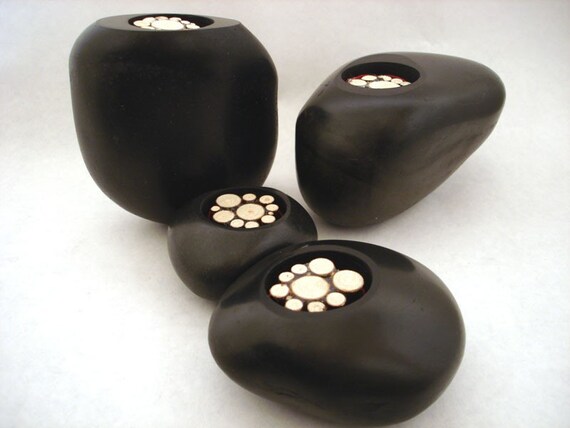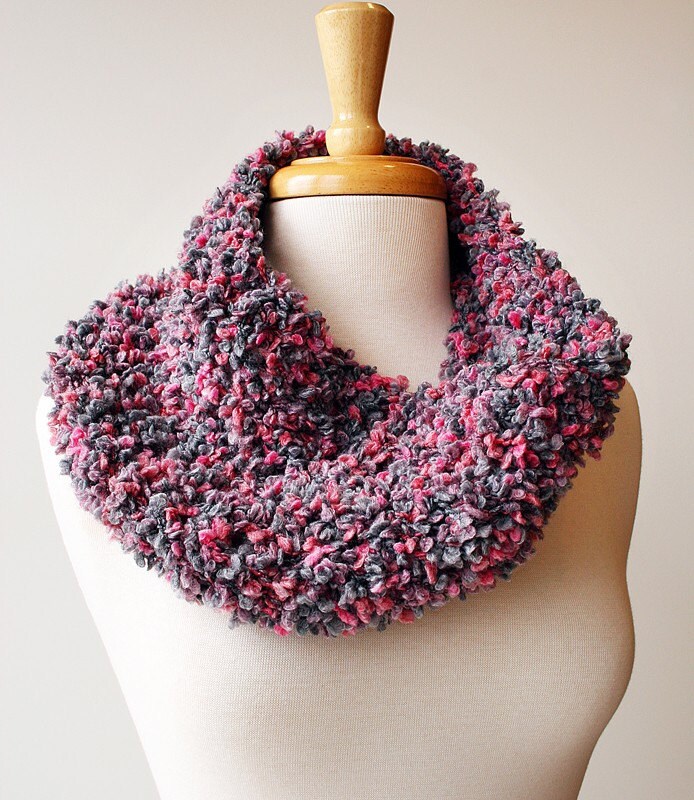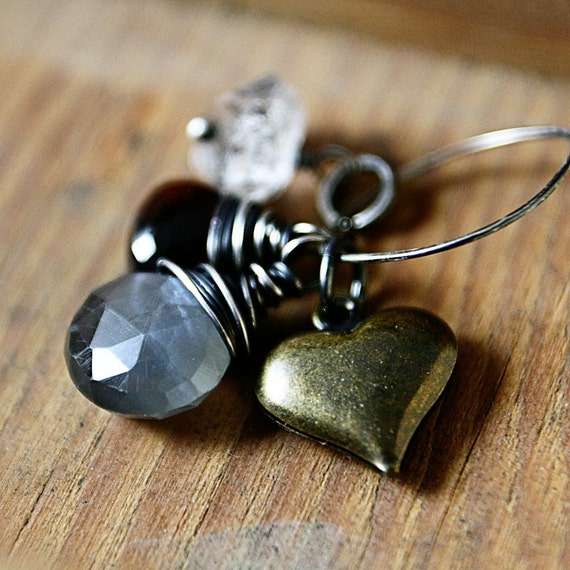Set of Glacial Stone Tealight holders by Brooksparrow
If you’ve never sold wholesale before, and the thought of asking a gallery to represent your work sounds akin to dental surgery with no anesthetic, you are not alone. We all have strong feelings of vulnerability when it comes to our art. Keep in mind that it is free to ask, and that a gallery buyer will make a business decision, not a personal decision, regarding your work. Take a notebook with you to your presentation, and record all feedback, positive and negative. It helps to keep accurate notes on what each gallery is looking for. Both rejections and acceptances are valuable learning tools.
The best way to begin is locally. Make visits to all your area’s galleries. Don’t introduce yourself as an artist at first- just look around at price points, style, and the amount of work in your media. Make notes.
When your gallery tour is complete, eliminate the galleries that are obviously not a good fit for you. Then rate the rest- first pick, second pick, etc. Remember that galleries in a mid sized town will want exclusive representation for that city, so if your work is in one, the rest will not want you. In a large city, the exclusivity is by neighborhood. Approach your first pick and get a reply from them before moving down the list.
Next, call the gallery, and ask to speak to the buyer, or get contact info for the buyer. Call or email that person. Ask if they are willing to view some images of your work, and tell her the name on your email account. Most people are reluctant to open images from unknown sources. If this is okay, email 3-5 images with info on the pieces, including wholesale price, size, name of collection.
Grapevine Cowl by Tickled Pink Knits
Follow up in a few days with a phone call if you don’t hear back, to make sure that your images arrived. If the buyer likes your images, ask for an appointment to show your portfolio in person, even if they are not buying in your media at this time. Let the gallery buyer know that you are willing to make a presentation anyway, and that you value her opinions and insights. I can’t tell you how many sales I’ve made to galleries who said they were not buying at that time! Buyers are generally very cautious with money, but will spend for something they are excited about.
sterling silver and gemstone necklace by polestar
Next Wednesday I will cover how to make a successful in person presentation. I am happy to help you succeed at wholesale marketing to galleries, so ask me anything and I’ll reply in the comments.
Lee Wolfe/ OneClayBead




14 comments:
This is great and this advice makes it a lot less intimidating to approach a gallery. Thank you!
Jen
I think alot of artists start & stop with consignment and for many, thats the right approach - especially for those seeking a smaller retail presence. As for my own studio, I've just entered into the world of wholesale and found it a better fit for my longterm objectives. Building retailers' inventories doesnt come without expense and inevitably there are limits on how much an artist can produce without recompense and thats, of course, where wholesale shines! Thanks for taking time to explore this - I think the more artists know about wholesale, the better positioned they are for longterm success! Looking forward to Wednesday's lesson two! ;)
Brooks
Enjoyed reading and I really appreciate this advice. Thanks for sharing.
I really hope that someday I will reach this point...
Good advice! And many thanks for featuring my knit cowl!
I have to say that in my limited experience so far, the wholesale discounts expected even by places that say they support the indie/artisan/artist mission do not make financial sense to a one-person small business owner. At least that is the case with items created by hand, one at a time, from start to finish. Wholesale must be marvelous for those that sell prints and other items that are more easil/quickly reproduced...
Thank you Lee!!!
Elena, I agree with you that galleries must give us something in return for the discount! Ultimately, they must create enough demand for our work to generate a price increase. I also schedule wholesale buying for my off months, so that I have guaranteed income in off peak times.
Thanks to all for your interest and comments!
Lee/OneClayBead
I am so thankful for this series Lee!
Sort of off topic but what is the difference between a gallery and a shop? Or is there a difference? I had always thought of a gallery as an "art" setting and different from a typical retail shop. And then if there is a difference, does one approach them differently?
- Genevieve
Great information. There are so many galleries here it's good to have a plan. Thanks for your insightful information.
another great installment ~ thankyou ~ it's a super daunting task that i've yet to attempt!
great advice :)
thanks for this useful post!
Genevieve,
A gallery carries work made by individuals, with artistic expression as an intention. There are solely Fine Art galleries, solely Fine Craft galleries, and mixtures of each. Galleries have a style of work that the gallery owner promotes.
A shop is just a store, it is whatever the owner wants it to be. Shops that are very high end and trendy might help you as an artisan if your work can compete price wise with manufactured goods. A new trend is for large chain stores to have a handcrafted section, so you might want to keep an eye out for this.
Hope that helps!
Lee/ OneClayBead
Wow! Fabulous and encouraging resource. Im going to have to point Paul over here!
Kate
Thanks Lee!
Post a Comment